On the face of it, iPhone 15 Plus is a tough sell. You can tell just looking at some of the sales figures for the iPhone 14 Plus — faring better than the mini iPhones of old, but still struggling compared to the rest of the lineup.
However, it seems like Apple took that personally with some fundamental upgrades that include a trip to the Dynamic Island, a USB-C port (finally), and a massive camera update. Combine that with the bigger battery afforded to the Plus by its super-sized stature, and you have what I believe to be the best option of the entire iPhone 15 lineup.
Does any of this still make it an easy sell? That’s tricky to say in an ocean of similarly-priced Android phones providing better specs and more versatile camera systems. But if you’re looking to go the iOS route, let me explain why this is the one to pick.
iPhone 15 Plus price and configurations
The iPhone 15 Plus comes in three storage options:
- 128GB: $899 / £899
- 256GB: $999 / £999
- 512GB: $1,199 / £1,199
As I mentioned in my iPhone 15 Pro review, my fellow Brits will notice these prices are a tad cheaper than the iPhone 14 Plus. That’s because Apple has reverted back to normal pricing after the inflation-driven increase that got me riled up about the 14th generation.
However, this price does become one of the 15 Plus’ biggest obstacles — bigger than its size in fact, which I understand won’t be to everyone’s taste. While this is the same price as the Samsung Galaxy S23+, you can pick up the OnePlus 11 for $200 less. Make no mistake about it, the iPhone 15 Plus is in tough waters at its price point.
iPhone 15 Plus design
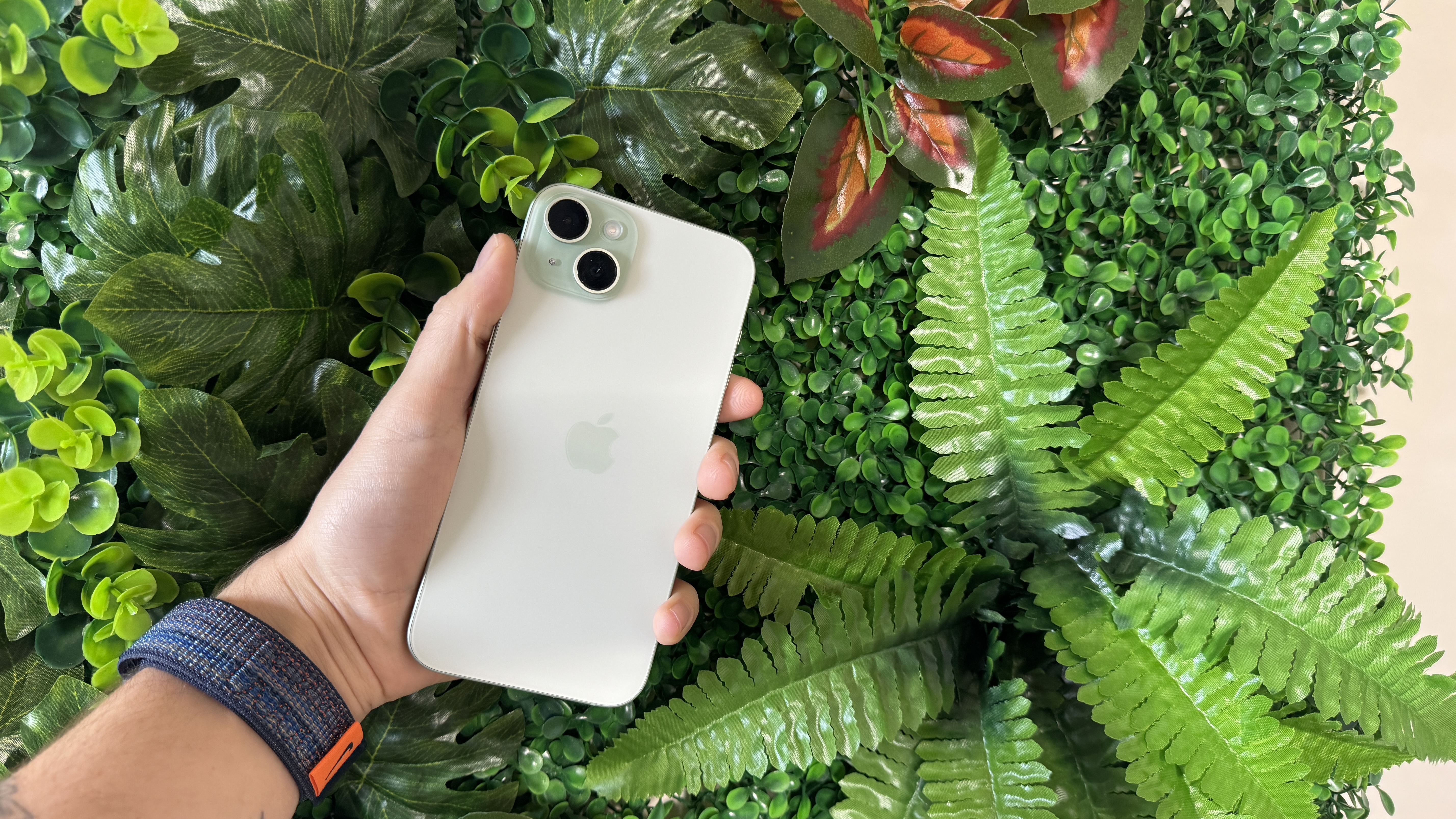
Compared to the dark, moody, utilitarian titanium look of the 15 Pro, the iPhone 15 Plus just feels fun, you know? Not in any way that diminishes its premium stature — the aerospace-grade aluminum enclosure has a slight contour to its edges for a better fit in the hand, and the textured glass on the back is blissful to the touch.
But I mean just look at this pastel green. Yes, the Barbiefied pink is a gorgeous finish, but the light hint of greenery to the finish of my review unit is my favorite color of the line. And you get that same charmed impression whether you pick one of the two above, or blue, green, or yellow. Don’t worry, if fun colors aren’t your thing, the black colorway is still here for you.
So why are these finishes so subtly fun compared to the bright, brash iPhone 14s? Well, it comes down to the color being infused into the glass — infusing the phones with more than just a surface level of pastel. I like it!
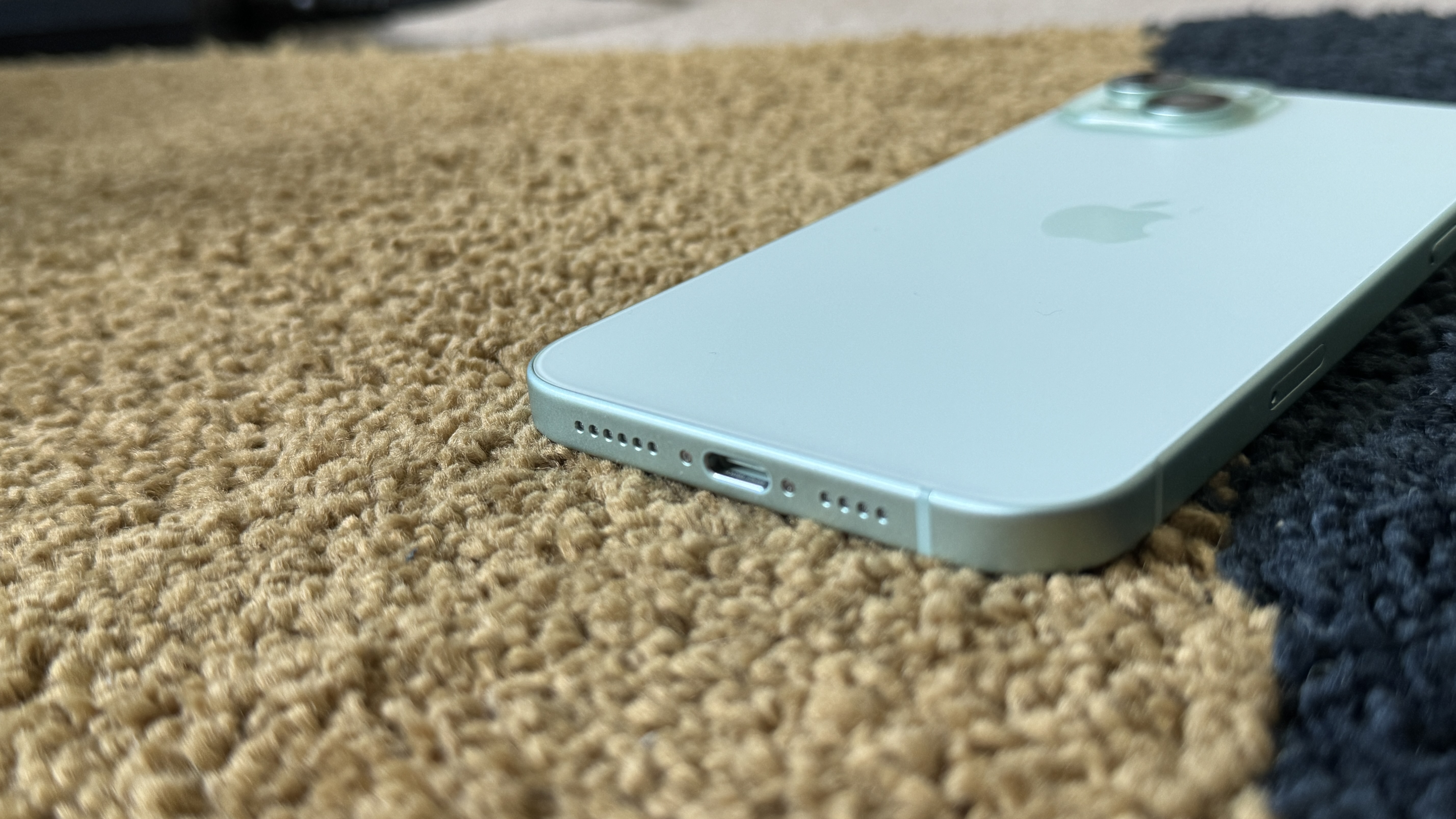
Of course, the other key design tweak here is that we finally get to say sayonara to the Lightning port and welcome USB-C to the party (thanks, EU). Not having to carry multiple cables, and just knowing my 15 Plus will work with several accessories around the flat has been a breath of fresh air.
Though it is worth noting, you get only USB 2 support from that port, so data transfer speeds are slow at just 480 Mbps. Plus, charging hasn’t really sped up at all, but we’ll get to that later.
Let’s address the large and in charge elephant in the room here: This is a big phone. Apple has worked around that a little with curved edges and an even weight distribution, but those with small pockets are still going to struggle.
| Phone | Dimensions | Weight |
|---|---|---|
| iPhone 15 Plus | 6.33 x 3.06 x 0.31 inches | 7.1 ounces |
| iPhone 14 Plus | 6.33 x 3.07 x 0.31 inches | 7.2 ounces |
| Samsung Galaxy S23+ | 6.21 x 3 x 0.3 inches | 7.0 ounces |
| OnePlus 11 | 6.42 x 2.92 x 0.33 inches | 7.2 ounces |
As you can see, it’s slightly smaller than the OnePlus 11, but the Galaxy S23+ edges it in terms of portability. I know that while I can say this is the best of the iPhone 15s, that stature is not going to be for everyone — it makes reaching for the sleep button and volume controls a struggle without two-handed use.
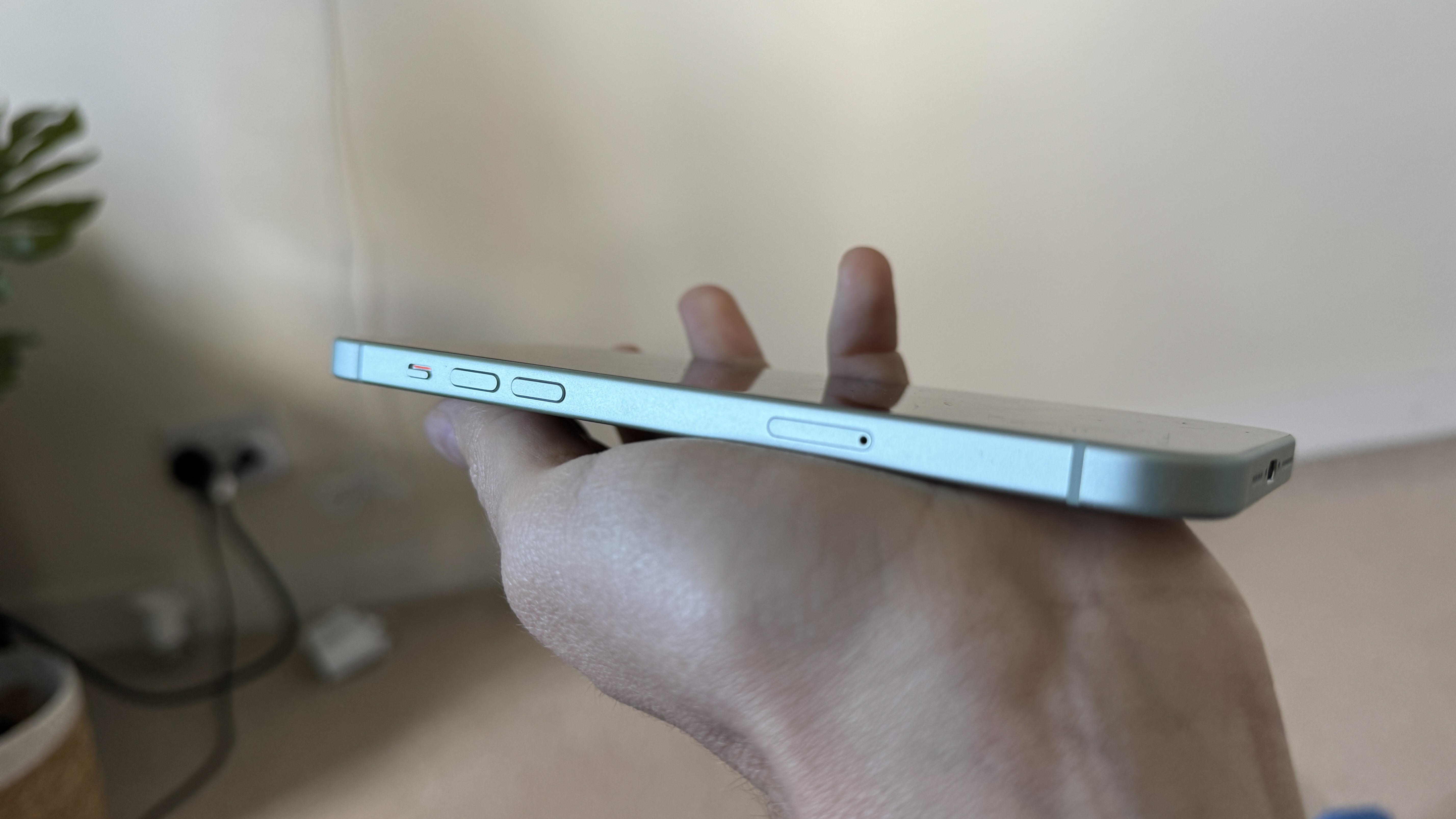
So, all-in-all, the 15 Plus’ design benefits from the refinements. Though I sorely miss the Action Button having just finished reviewing the 15 Pro, the largely redundant mute switch will sit unused on the 15 Plus.
iPhone 15 Plus display
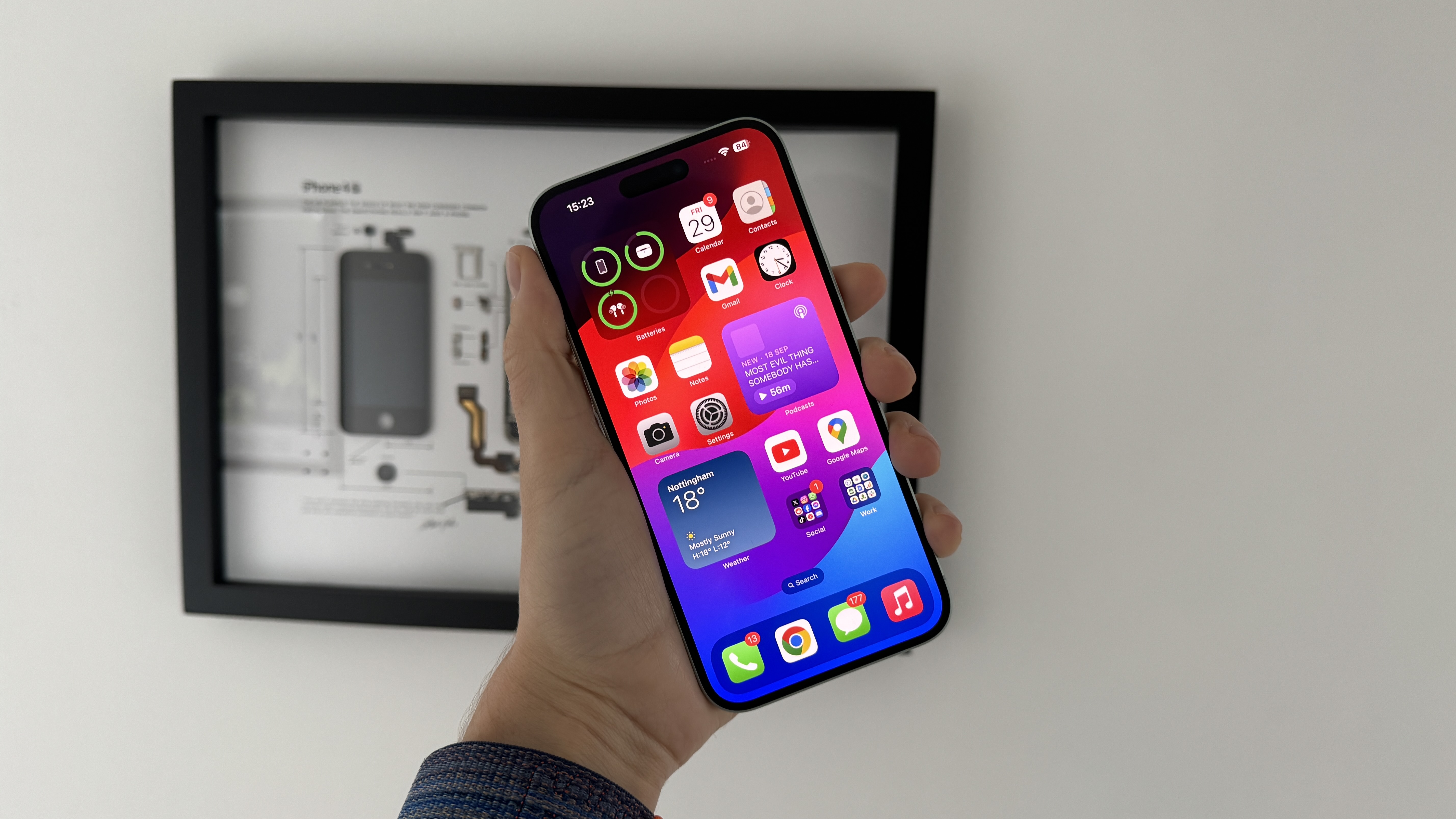
I’m just going to say the one thing everyone is thinking. In 2023, a 60Hz display on a phone is starting to get a little silly. Don’t get me wrong — this is a good looking panel. But come on now, you can get up to 120Hz refresh rates on phones at half the cost of the iPhone 15 Plus.
But if you’re in the camp that doesn’t necessarily care about how buttery smooth your panel is (which after talking to a lot of my non-nerdy friends is probably going to be a lot of you), this 6.7-inch Super Retina XDR display is bright, colorful, and packed with good, contrasty depth.
| Phone | Brightness (SDR) | DCI-P3 color gamut (%) | Delta-E color accuracy (lower is better) |
|---|---|---|---|
| iPhone 15 Plus | 957 nits | 81.8% | 0.13 |
| iPhone 14 Plus | 764 nits | 85.4% | 0.25 |
| Samsung Galaxy S23+ | 1,012 nits | 83% | 0.23 |
| OnePlus 11 | 470 nits | 83% | 0.24 |
Faced up against the competition, it’s not necessarily the brightest or the most colorful. But you’d be hard pressed to spot that in use. Firing up an episode of Swagger on Apple TV+ really shows off the HDR quality in the contrast of darker scenes, whereas the bright orange of the basketball pops with gorgeous vividity amongst the background of a screaming crowd.
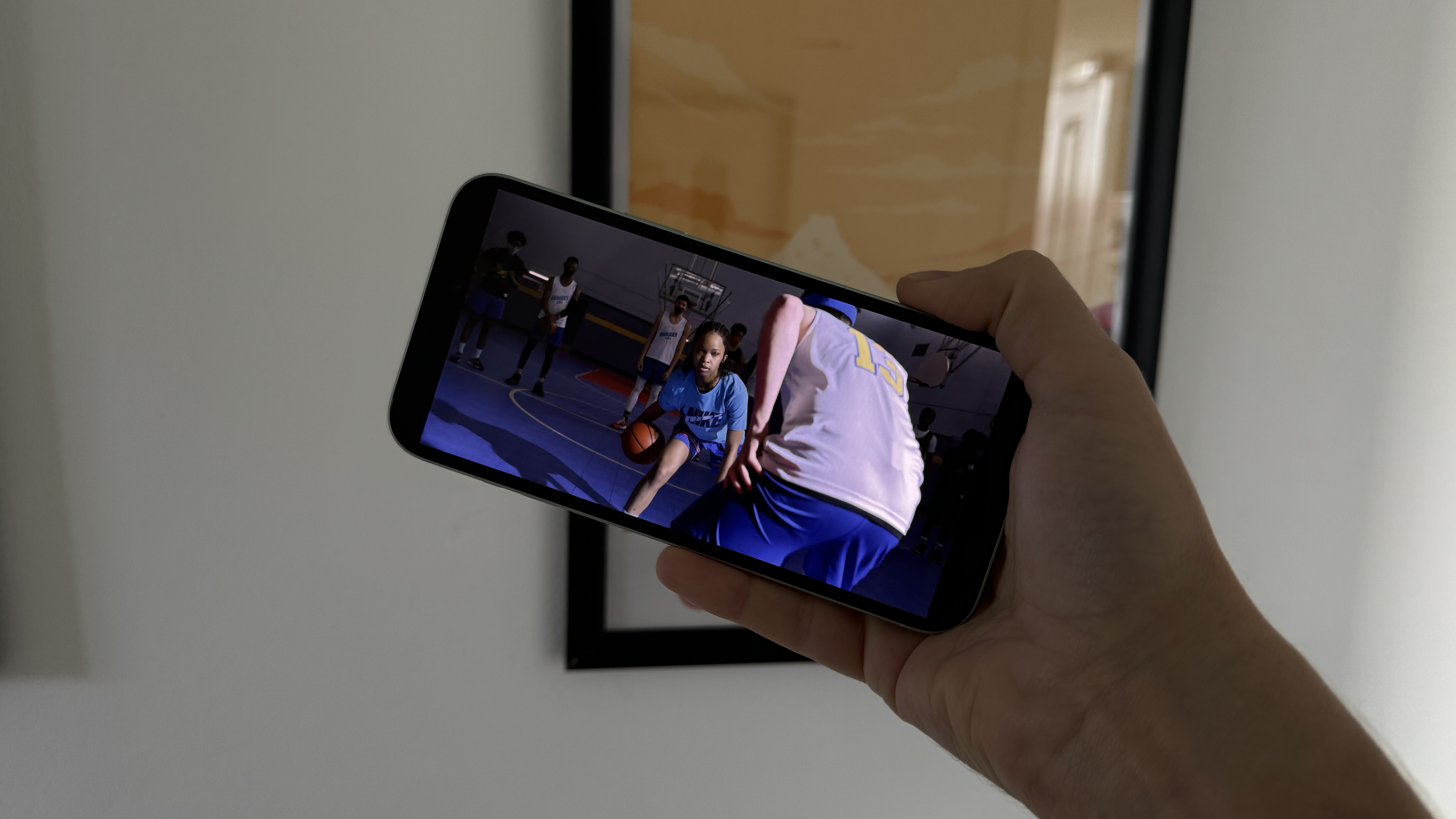
What’s most interesting, though, is that the Dynamic Island makes the leap from the Pros of last year to every iPhone in 2023. The interactive pill-shaped cutout has been getting better over time with increased levels of developer support, via the Live Activities API. Early adopters have probably realized it took a while to get to this point, but usability has grown beyond just seeing what’s currently playing and seeing your timers.
iPhone 15 Plus audio
It bears repeating that for the best listening experience, pick up a pair of the best wireless headphones, as there is no 3.5mm headphone jack. But for those social listening experiences, you’re getting exactly what you’d expect from a pair of small stereo speakers on an iPhone — decent clarity, but no real bass.
The tweets were able to handle the multi-layered chaos and ferocity of Bring Me The Horizon’s “AmEN!” with great aplomb, and even managed to do so at max volume, too, without a single hint of distortion. The 15 Plus handles its own business well in this area.
iPhone 15 Plus performance
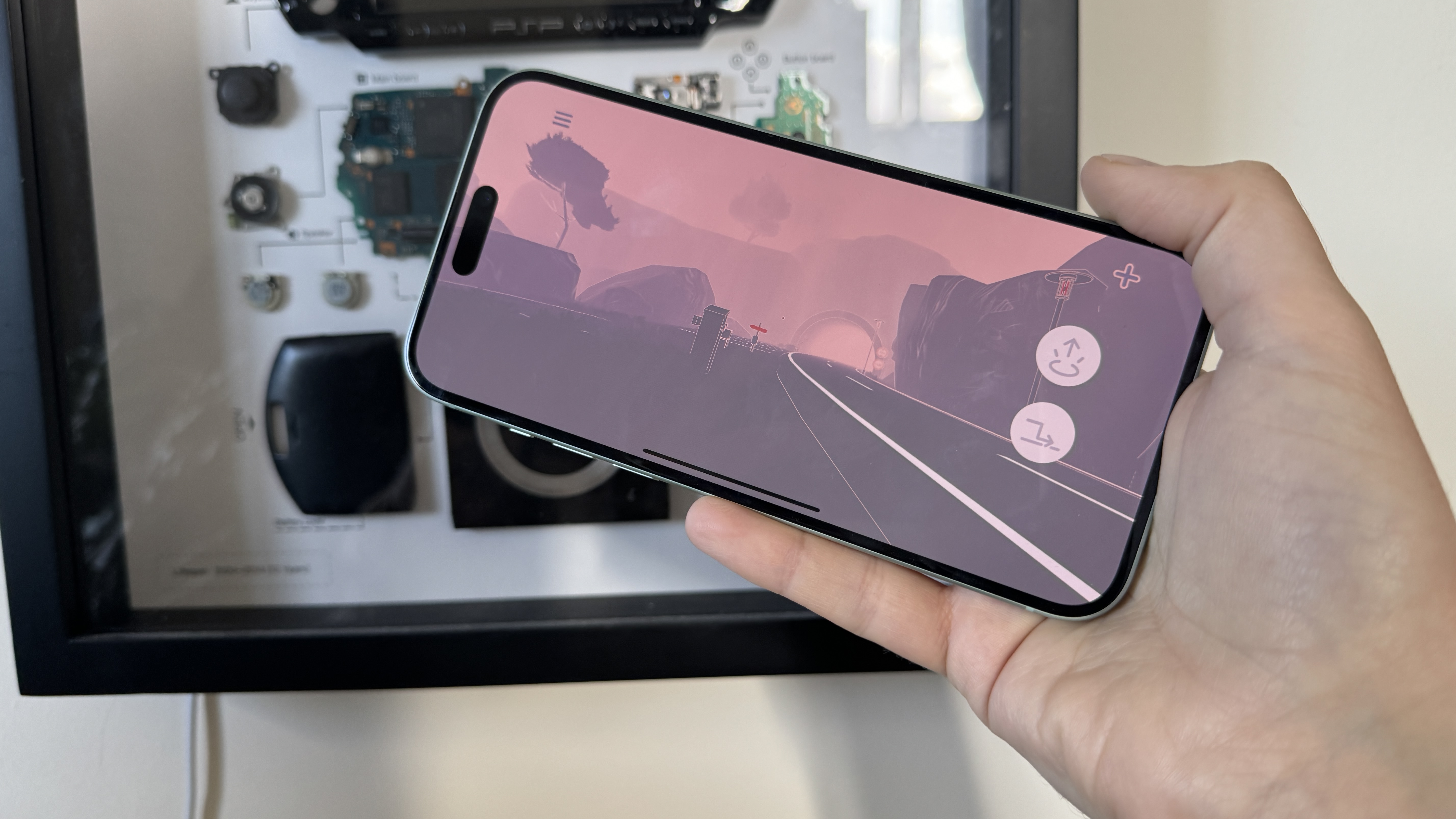
While the Pros always get the latest and greatest (in this case it’s the world’s first 3nm chipset — the A17 Pro), the standard iPhones pick up the chipset from last year’s top models. For the 15 Plus, that means you’re getting the A16 Bionic, and chances are you won’t feel a damn difference in speed between this and the A17 Pro.
What do I mean by that? Well, it comes down to two reasons — the apps most of us use have been developed in a way to be zippy without demanding too much of the on-board power, and when you break down the benchmarks, the 15 Plus can still kick it with the competition.
| Benchmark | iPhone 15 Plus | iPhone 14 Plus | Samsung Galaxy S23+ | OnePlus 11 |
|---|---|---|---|---|
| Geekbench 6 Single-core | 2551 | 2235 | 1885 | 1536 |
| Geekbench 6 multicore | 6280 | 5424 | 4888 | 5065 |
| 3DMark Wild Life Extreme | 3076 | 2839 | 3870 | 3627 |
Of course, the results are more of a mixed bag compared to the 15 Pro annihilating its competitors. Graphics performance falters compared to the Snapdragon 8 Gen 2 in the Galaxy S23+ and Oneplus 11. But CPU performance in Geekbench conditions continues to breeze past the Android brethren.
This all translates to apps that open in a flash, effective multi-tasking without a hint of slowdown (even when you mass-edit several 48MP images and play a more graphically intense game from our Best Apple Arcade Games list), and zero impact on touch responsiveness under a heavy load.
Of course, you are missing out on the A17 Pro’s mind blowing graphical capabilities, including hardware accelerated ray tracing and the capability to support console-quality games like the upcoming release of Resident Evil Village, and Assassin’s Creed Mirage.
But let’s be honest. There’s a lot of you out there who won’t miss not being able to see traced rays in your games. For all the jobs you throw at a smartphone, the A16 Bionic will eat them for breakfast and then come back for seconds.
iPhone 15 Plus battery life & charging
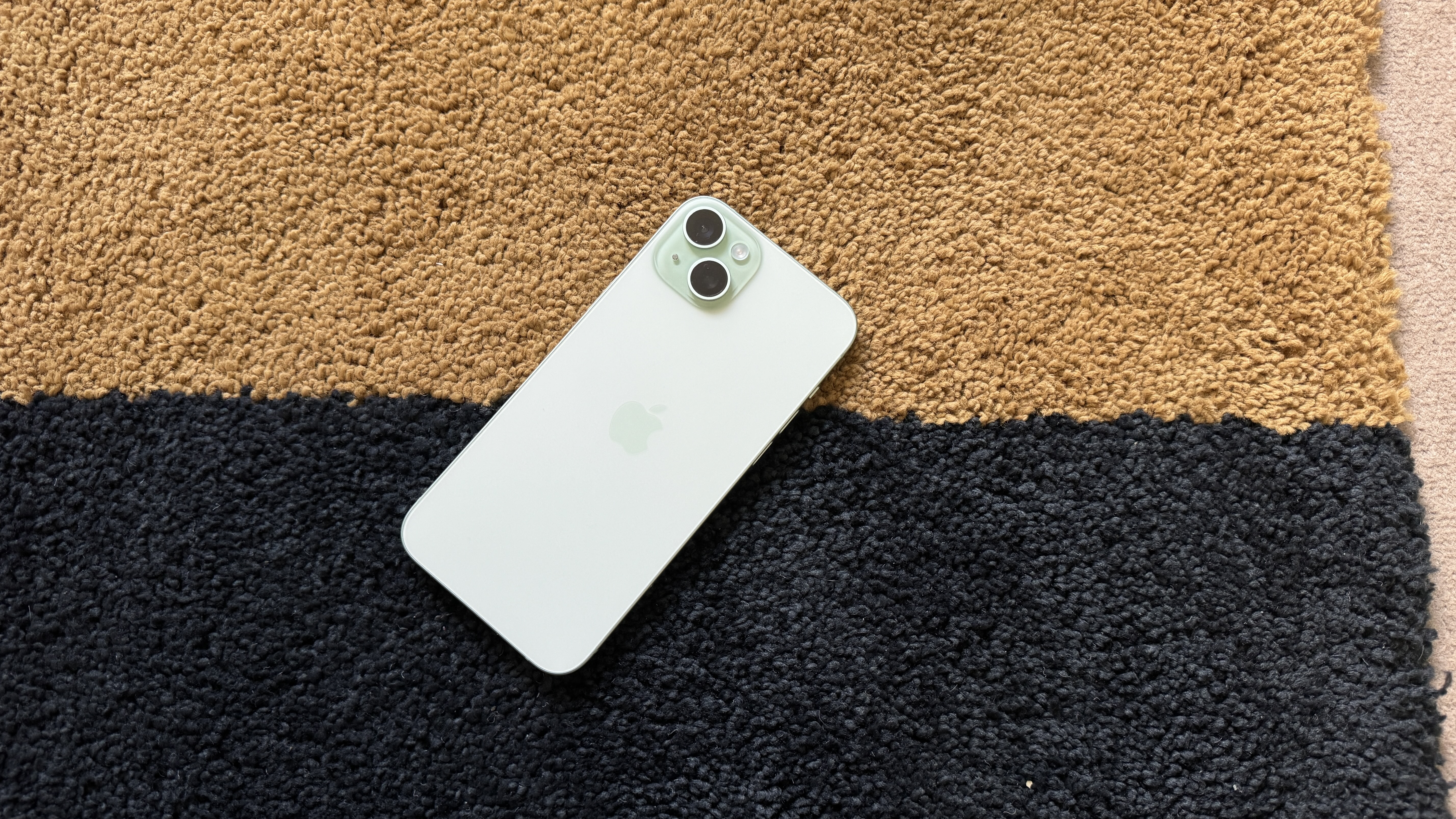
Now we come to the superpower of the iPhone 15 Plus, which just like Superman, has a kryptonite-esque weakness too — the battery.
Much like the rest of the iPhone lineup, capacity has been bumped up slightly to 4,383mAh, and while that change is small, the end result is a dramatic jump in longevity from the iPhone 14 Plus. We’re now entering worry-free battery life territory with the 15 Plus.
| Phone | Rundown test (hours:minutes) | Charging % after 30 minutes |
|---|---|---|
| iPhone 15 Plus | 14:14 | 39% |
| iPhone 14 Plus | 11:57 | 46% |
| Samsung Galaxy S23+ | 11:38 | 71% |
| OnePlus 11 | 13:10 | 97% |
Even with the larger cells found inside the Oneplus 11 (5,000mAh) and the Galaxy S23+ (4,700mAh), the 15 Plus calmly sips that juice at a far more leisurely pace, while its Android competition is getting the early taxi home.
In my normal day’s use, which starts at 8 a.m. and includes a few hours of web browsing, listening to podcasts and Spotify all day, plenty of social media use, photography, gaming, and watching YouTube videos in the evening), the Plus still had around 30% by 11 p.m. that evening.
But let’s talk about kryptonite. Great to see USB-C here, but Apple hasn’t explored the fast charging capabilities of this whatsoever. With just 20W charging, you will be waiting a while to get this back up to full — especially when compared to the 30-minute full charge time of the OnePlus 11.
iPhone 15 Plus photography
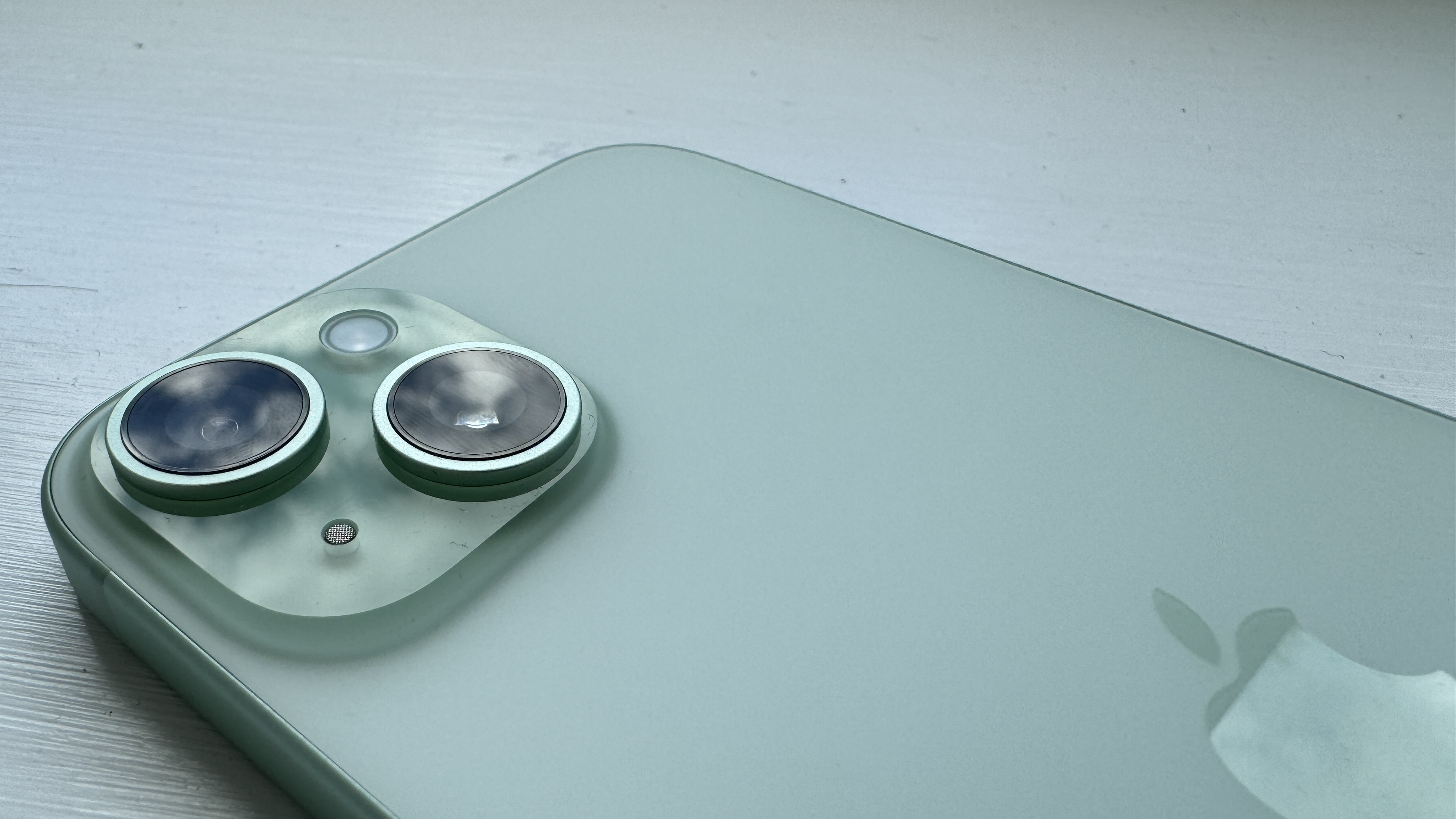
Here it is. The biggest upgrade to the iPhone 15 Plus — not the USB-C port or the Dynamic Island. This year, Apple has finally dropped the 12MP main sensor across the board, and given the standard 15s a huge bump to the 48MP sensor from the 14 Pro lineage.
- 48MP main camera: 26mm focal length and f/1.6 aperture
- 12MP ultra wide camera: 13mm focal length and f/2.4 aperture
- 12MP selfie camera: f/1.9 aperture
The end result, combined with Apple’s refined computational photography, creates a delicious array of pictures. Colors are nicely realized on normal mode (though I do prefer the Rich Contrast option for a more dramatic look), skin tones are accurately represented and thanks to that new 24MP super resolution binning technique, details are super crisp.
On top of that, if you are taking a picture of a person or pet, the camera will automatically identify the subject and capture all the depth detail — meaning you can edit the artificial bokeh after the fact and refocus on different subjects too. Plus, this editing capability is compatible with all past portrait photos you’ve taken. It’s another chance to revisit a shot and give it that extra bit of pizazz.
The 12MP ultra wide continues to be a lot of fun to use — providing additional options for creativity and scale. Details have a nice definition to them, but you’ll never get the same crispiness as you get on the main snapper (nor when compared to the 48MP option in the OnePlus 11).
Finally, selfies remain largely unchanged from last year’s iPhones, which is no bad thing given they have a nice sharp quality to subjects in the day, and are pretty impressive in low light.
As for video recording, it should come as no surprise that the quality is miles above what you can expect from the iPhone’s Android competition. Look past the odd lens flare when using in low light, and you’ll see gorgeous clips with delicious pops of color and contrast, as well as an impressive crispness that really brings a scene to life.
It’s not designed to be implemented into any prosumer workload (you’ll need the iPhone 15 Pro for that), but for the quick captures for TikTok, this is a blockbuster phone.
iPhone 15 Pro iOS 17
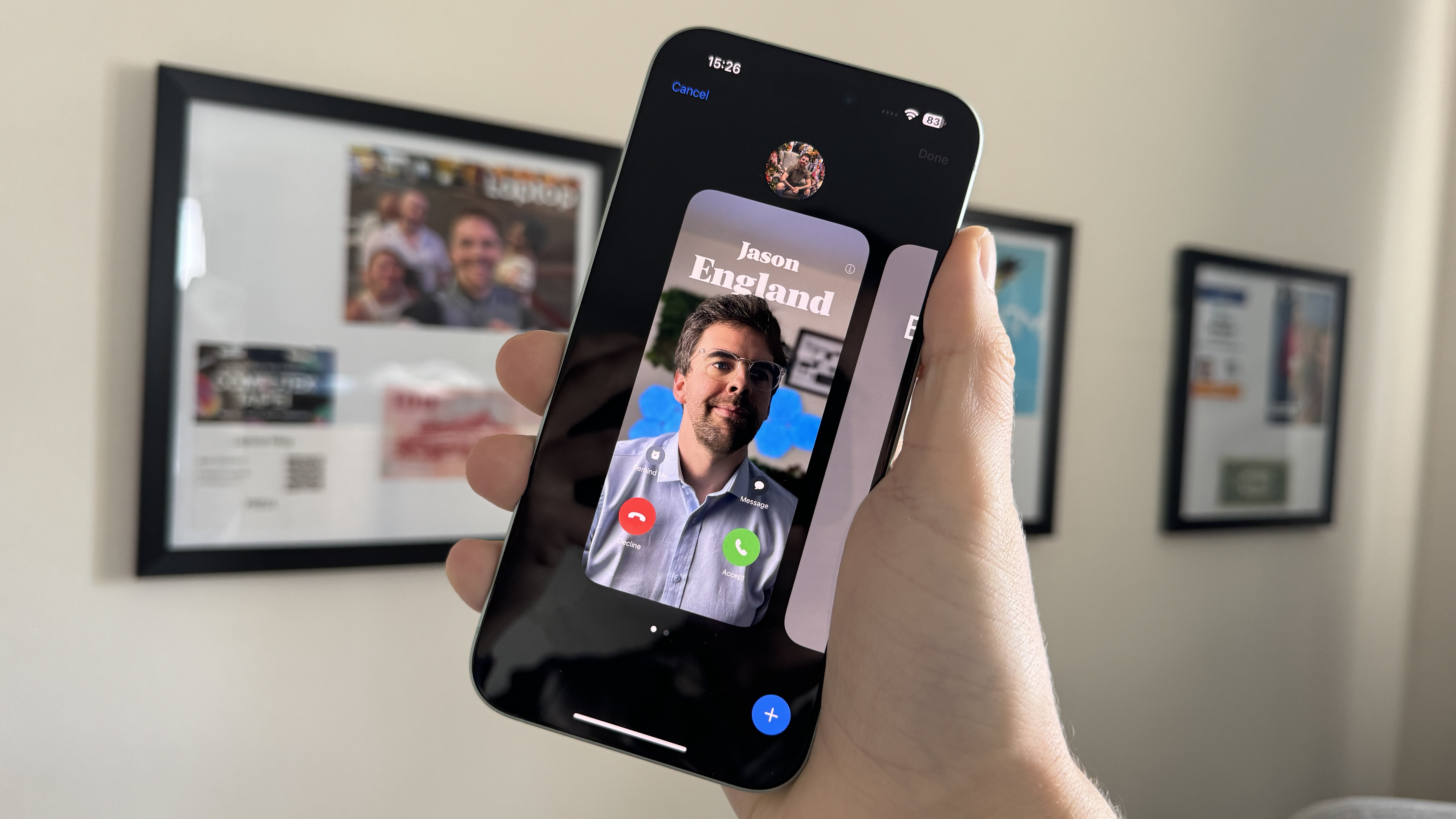
We’ve already gone hands-on with iOS 17, but to sum up my experience with it, it’s all about refinement with a few new features that add additional creativity and convenience.
These include StandBy mode, which has lowkey become one of my favorite features, the ability to create a contact poster to express your identity to others, multiple timers (finally), and massive changes to AirDrop — simply tapping your phone to someone else’s to exchange files and contact information.
As for software support, given iOS 17 is being released to phones as old as the iPhone XR, you can already assume that Apple doesn’t mess about when it comes to providing you with years of new features and security updates.
Bottom Line
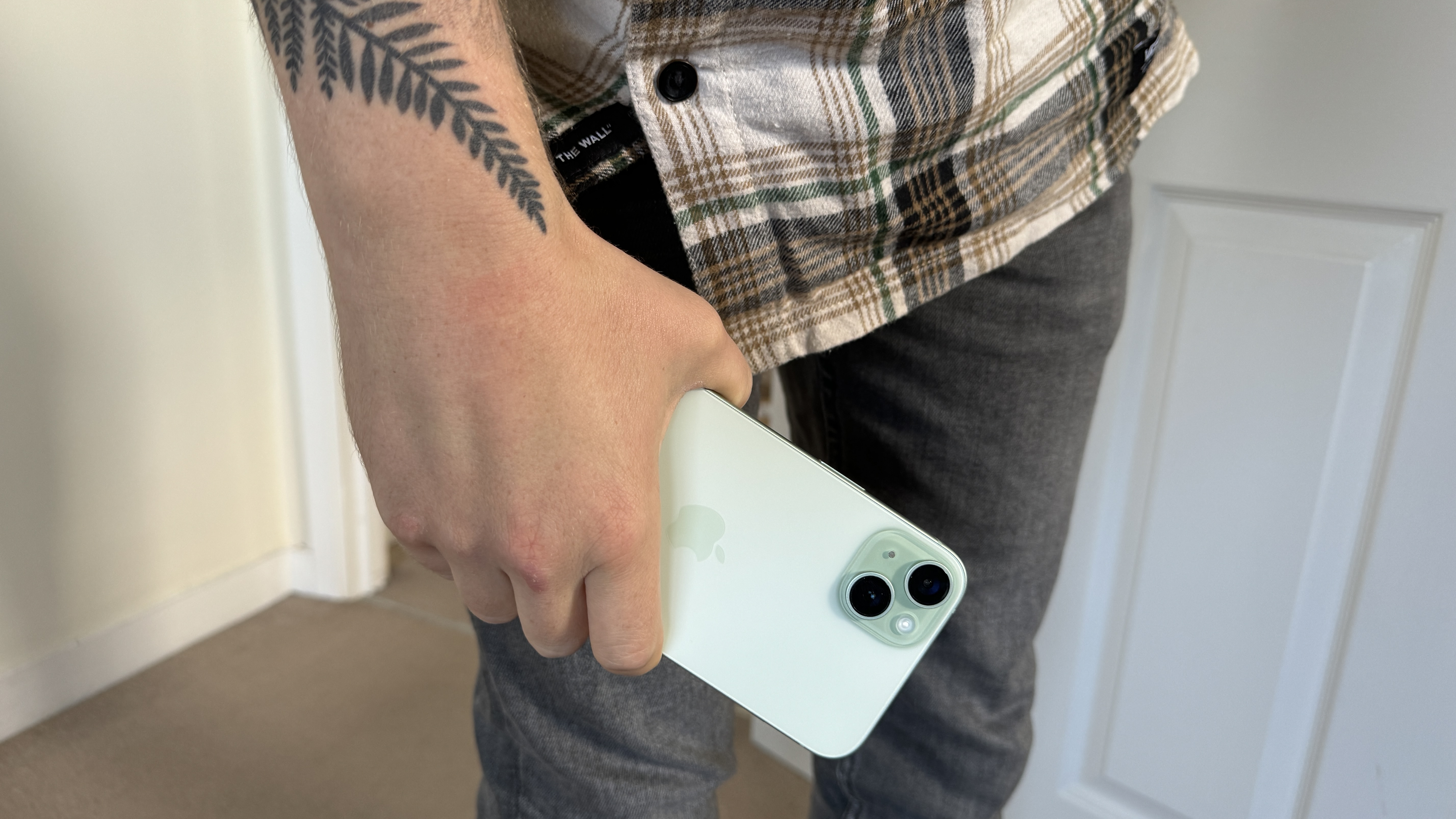
The iPhone 15 Plus is not a revolution, but it certainly is an evolution — becoming more than the “hotter twin” of the standard iPhones of last year, and turning into the one I would recommend to everyone.
Adding the 48MP camera is a huge upgrade you’re going to love, Dynamic Island is becoming an increasingly useful feature, and USB-C is a warmly welcomed port change.
I wish the Action Button made its jump over to the standard 15s too, and $899 for a 60Hz display is getting a little silly for those who know what Android phones offer at the same price. But when it comes to the iPhone lineup, that spec sheet, massive battery, and a sleeker, more comfortable design make this the leader of the iPhone pack.
Source link
 notebook.co.id informasi dan review notebook laptop tablet dan pc
notebook.co.id informasi dan review notebook laptop tablet dan pc
